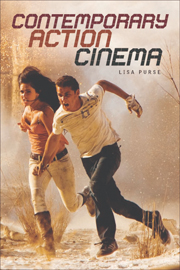Book contents
- Frontmatter
- Contents
- Illustrations
- Acknowledgements
- Introduction: ‘Where are we, and how did we get here?’
- 1 Narrative and the action film
- 2 The action body
- 3 The action sequence
- 4 Action women
- 5 Action men
- 6 Race in the action film
- 7 Homosexuality in the action film
- 8 Action cinema after 9/11
- 9 The ‘European connection’
- Afterword
- Bibliography
- Filmography
- Television Series
- Index
3 - The action sequence
Published online by Cambridge University Press: 05 August 2013
- Frontmatter
- Contents
- Illustrations
- Acknowledgements
- Introduction: ‘Where are we, and how did we get here?’
- 1 Narrative and the action film
- 2 The action body
- 3 The action sequence
- 4 Action women
- 5 Action men
- 6 Race in the action film
- 7 Homosexuality in the action film
- 8 Action cinema after 9/11
- 9 The ‘European connection’
- Afterword
- Bibliography
- Filmography
- Television Series
- Index
Summary
The action sequence is one of the defining elements of action cinema, displaying dramatic physical action with a dynamism and intensity that marks it out from other sequences. It is perceived by scholars and industry executives alike to be a crucial ingredient in the blockbuster format, and can provide exhilarating and riveting spectacles for audiences. Geoff King (2006) and David Bordwell (2006) have both offered useful accounts of the visual strategies that characterise the modern action sequence, and we will be touching upon some of their ideas in this chapter. However, rather than providing another summary – or indeed an exhaustive taxonomy – of action sequence characteristics, the main project of this chapter is twofold: to suggest productive areas of enquiry when analysing any action sequence (and its place in the wider film), and to build on the discussion in Chapters 1 and 2 by elucidating the pleasures that action cinema offers as a form of cinematic entertainment.
THE SPEEDS OF ACTION
Fast and Furious (Justin Lin, 2009) opens in emphatic motion on an open road, cracked asphalt whipping underneath the camera at speed. The frame tilts up to bring a lorry cab into view. It is powering towards the camera, which is tracking backwards to keep it in shot; when the lorry cab passes the camera it becomes clear it is carrying six tanks of petroleum gas, the giant wheels of each tank whistling past the camera in turn.
- Type
- Chapter
- Information
- Contemporary Action Cinema , pp. 56 - 75Publisher: Edinburgh University PressPrint publication year: 2011



